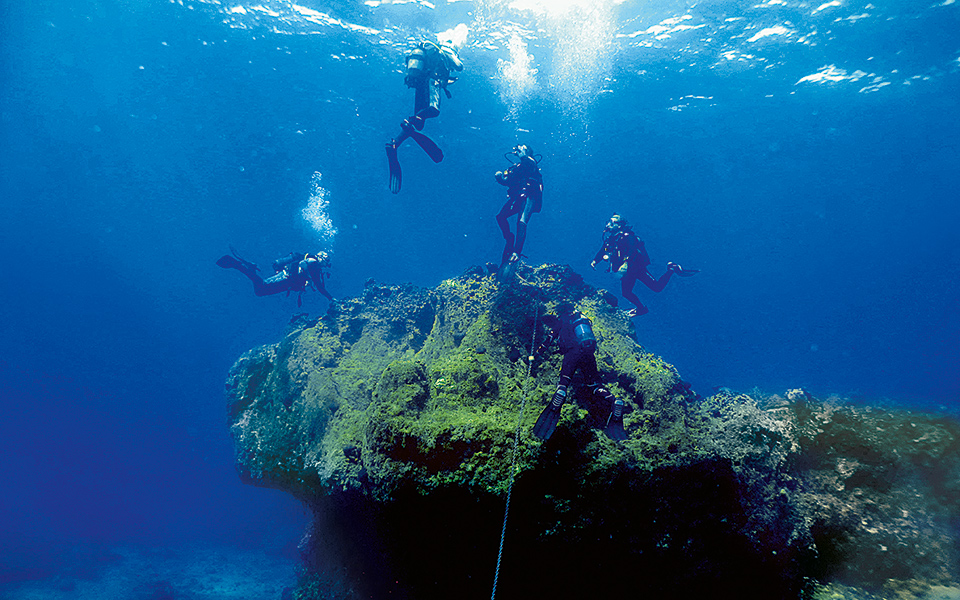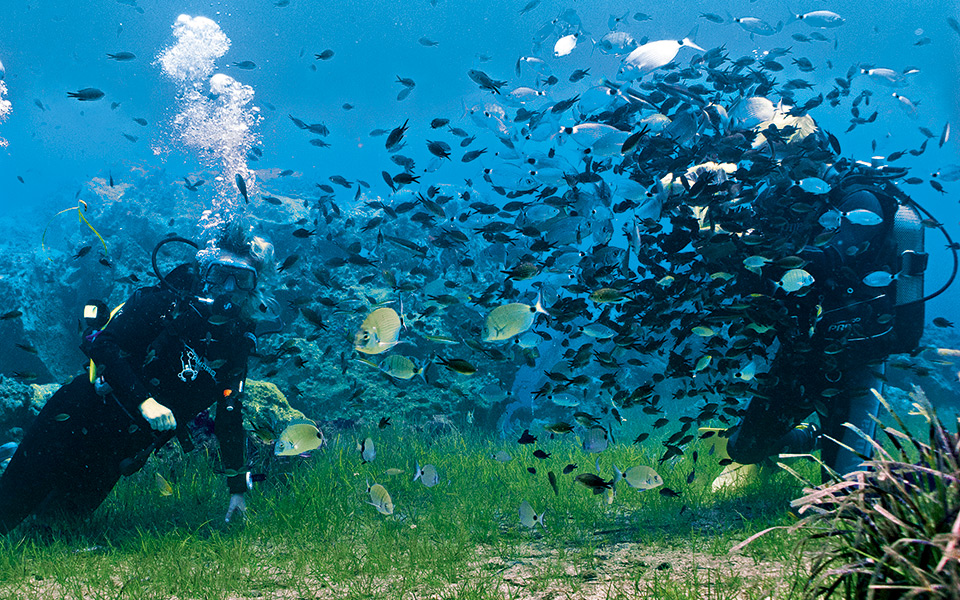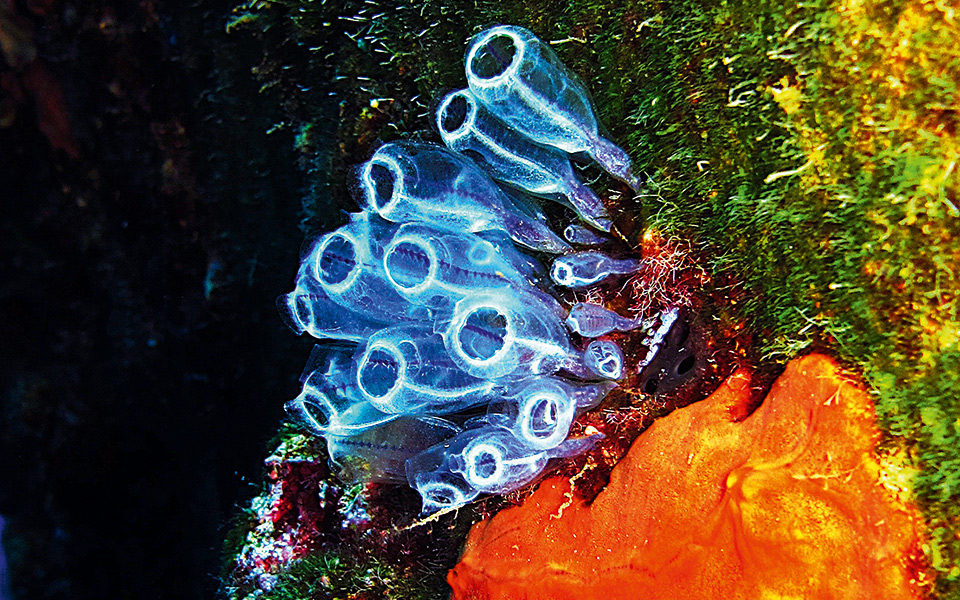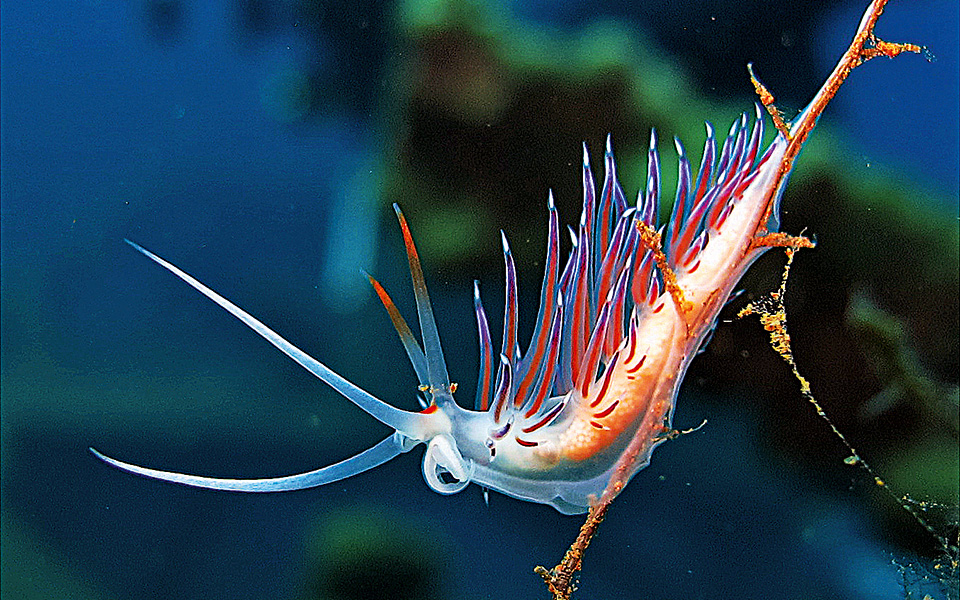Santorini Beyond the Crowds: What to See and...
Discover hidden beaches, authentic tavernas, ancient...

Inside the heart of the volcano
It’s been 40 years since the legendary explorer Jacques Cousteau sailed the legendary Calypso to Santorini in the hopes of discovering the Lost City of Atlantis. The results of his 1975 expedition were disappointing, as extensive underwater research failed to reveal any concrete evidence of its existence. Despite this setback, however, Cousteau made another important discovery that he shared with the world: . It is this treasure that continues to attract divers from around the globe.
The biggest underwater caldera in the world offers a plethora of images: endless cliffs, solid walls, reefs and lush meadows of sea grass. The most popular dive sites are located off the coast between Fira and Akrotiri. Particular interest is shown in the savage environment off Palia and Nea Kameni, where vast lava formations illustrate how the small islets emerged from the bowels of the Earth. The conditions are ideal, with visibility reaching 20 meters and the water temperature climbing to 23-27 degrees Celsius in the summer.
“ The biggest underwater caldera in the world offers a plethora of images: endless cliffs, solid walls, reefs and lush meadows of sea grass. ”

Finding Nemo, the Santorini way
© Kreuzberger Sebastian/Slk Photography

Amazing creatures of the deep, pt.1

Amazing creatures of the deep, pt.2
The Cousteau family’s special bond with Santorini was not severed after Jacques failed to find Atlantis, as his younger son, Pierre-Yves, visited the island in 2009. Charmed by its natural beauty, its people and, of course, the volcano – “a monument that reminds us of the fragility of human existence” – he decided that from all the places where he could have qualified as a diving instructor, he would do it in Santorini. What he saw was a magnificent backdrop devoid of life.
“Santorini has volcanic formations, underwater caves and ravines – a magnificent stage. But where are the actors? Where are the fish? They were gone…” he said.
It was this observation that compelled him to take action against the blight of over-fishing, with the establishment of a Marine Protected Area (MPA), which, according to the study, could result in an increase of 21% in diversity, 28% in the size of organisms, 166% in density and 446% in biomass, relative to unprotected areas nearby. Together with the “Thiraiki Thalassa” Society for the Marine Protected Area of Santorini and with the island’s fishermen and locals joining the battle, experts hope to establish a management body within the next year that will delineate the borders of the marine park and impose strict controls. The objective is to turn Santorini into one of the premiere diving destinations in the Mediterranean.
Santorini’s dive centers are certified by the leading international authorities. They provide all the equipment and offer a complete range of programs, from the kids’ Bubblemaker to instructor-level training.
ATLANTIS OIA
Tel. (+30) 22860.71.158
AEGEAN DIVERS
Aghia Irini, Pyrgos •
Tel. (+30) 22860.33.201
SANTORINI DIVECENTER
Perissa • Tel. (+30) 22860.83.190
MEDITARRANEAN DIVE CLUB
Perissa Beach • Tel. (+30) 22860.83.080
NAVY’S WATERWORLD
Kamari Beach • Tel. (+30) 22860.28.190
VOLCANO DIVING CENTER
Kamari • Tel. (+30) 22860.33.177
Discover hidden beaches, authentic tavernas, ancient...
From Samos to Crete, we've selected...
From Santorini sunsets to ancient ruins,...